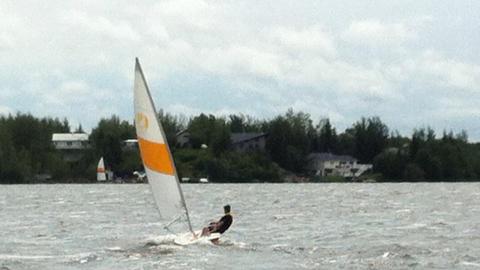0 comments
125 views

Summer is over again and the necessary chore (for those of us who live in cold winter climates) of putting away our warm weather toys for another season has been completed. For me that means winterizing my sailboat for a long winter and protecting them from snow and ice.
As I look back at the summer and take a balcony view of the events that filled our days, and those things that made the summer fly by so quickly, one particular weekend spoke to me.
This one weekend was a planned teaching event where I would take a couple of days for intergenerational ministry called “learning to sail”. Youth from very young to people my age (lets say around 50) would be taught various stages of sailing. As I prepared to take a couple of youth out on the boat, one who was sailing for the very first time, an overview of the terminology (bow, stern, port and starboard, rudder, mast, sail and centerboard etc.) started to become part of their new vocabulary that weekend.
As each item began to hold meaning for them, it was the piece of equipment called the center (or dagger) board that had huge impact for our sail. The centerboard is a piece of wood (in our case) that is raised and lowered in and out of its position, as we get further away or closer to shore.
By definition, a centreboard (often called a lifting foil in a modern racing dinghy) is used to provide lift to counter the lateral force from the sails. This is required for sailboats to move in directions other than downwind, since the force of the sail is never closer than 45 degrees to the apparent wind. Since most sailboats are symmetric along their axis of motion, when sailing upright, the lateral force can come from either side, which means that centreboards must use symmetric foil shapes so they will operate with equal efficiency on either tack. The more a yacht heels the more asymmetric its hull shape becomes.
The centerboard, daggerboard or bilgeboard can also be used as a recovery platform upon which to stand, providing increased leverage, in the event the dinghy overturns via a capsize or turtle.
In other words, once in place, it helps you track a course. Without it, you could tip over but more evident is that you will drift off course and depending on the strength, direction and power of the wind, often pushed away from your destination. Drifting is what happened to us when one of our crew lifted the centerboard out of position too soon causing us to move towards a place we did not want to go. The rudder (used for steering) was useless unless the centerboard was in place.
In ministry, we need that something to help us stay the course, to track well and offset to pressures that wants to knock us out of the race.
I had a conversation recently with some youth ministry leaders and we used the word “drift” as a descriptor of how our relationships or connections to people and/or organizations have changed over the years (i.e. with Christian schools, home, ministry supporters etc). Thoughts? Think about our (your) youth ministries. In what ways might we have drifted?
What in our youth ministries might constitute the centerboard, that thing that keeps us on track and gives us leverage to start again when we get dumped or capsize?
To start this list, some that have impacted me are:
Prayer
Peer relationships
Soul Care
Youth Ministry
Youth Ministry
Biblical Justice, Youth Ministry
Intergenerational Ministry, Youth Ministry
Connect to The Network and add your own question, blog, resource, or job.
Add Your Post
Let's Discuss
We love your comments! Thank you for helping us uphold the Community Guidelines to make this an encouraging and respectful community for everyone.